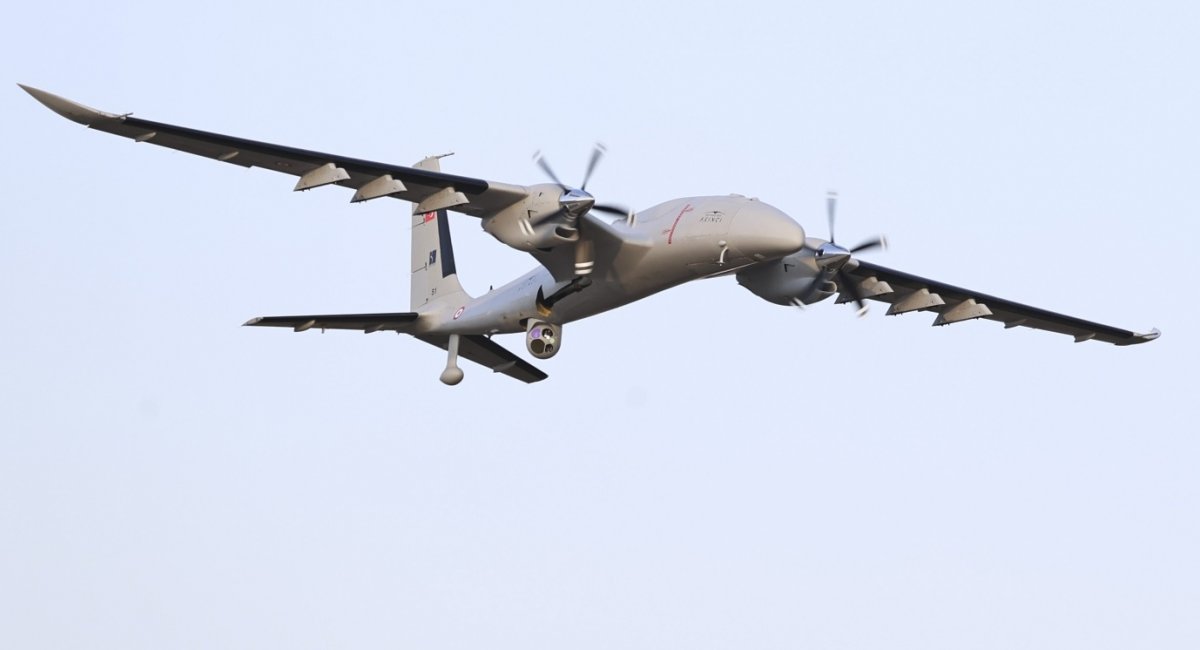
Strike Akıncı for the Armed Forces of Ukraine: what else is this UAV capable of besides launching cruise missiles and JDAM (video)
Turkey is armed with air-to-air missiles with infrared homing heads, but as a hunter for the Shahed-136, it may well use much cheaper and simpler means
Against the backdrop of the fact that the Turkish company Baykar continues to build a plant in Ukraine and actively invests in the Ukrainian defense industry, and the Bayraktar TB2 is actively used by the Armed Forces of Ukraine, the company already has a production Akıncı attack drone.
And if even before the full-scale invasion it was considered a classic strike drone that could use conventional aviation weapons, including high-precision JDAM bombs or analogs, and even SOM cruise missiles with a range of 250 km, the current challenges of the war allow us to look at this UAV from a different perspective.
Especially in the face of the threat of constant large-scale attacks by Shahed-136 kamikaze drones, which Russia launched more than 500 units in September.
Because Akıncı can use not only weapons to strike ground targets. For this purpose, it is proposed to use Turkish-made air-to-air missiles created under the Göktuğ program – Bozdoğan and Gökdoğan missiles. The first is a short-range missile with an infrared homing head, and the second is a medium-range missile with a radar head.
At the same time, because only the first Bozdoğan launch took place in 2021, and not from Akıncı, but from the F-16, this decision is still pending the completion of all work, and then integration under the wing of the drone. And, of course, there is also the issue of mass production of missiles, which began to be deployed in 2022.
But objectively, this is not the only option for arming a drone with air-to-air missiles. And we’re not even talking about the quite possible integration of other infrared-guided missiles at the request of the customer. It is quite possible to consider the option of using cheaper semi-active laser-guided missiles based on unguided rockets to destroy them.
The Akıncı is based on the Turkish Cirit from Roketsan, a 70-mm missile guided by a reflected laser beam. It weighs 15 kg and has a range of 8 km to hit ground targets.
In fact, Cirit is conceptually similar to APKWS, with a similar caliber and guidance principle. At the same time, the issue of using APKWS to defeat drones from an airplane has already been worked out. And objectively speaking, if Cirit is integrated into Akynsy, it can also launch and guide APKWS, because the drone’s optical-location station allows it to track and illuminate low-speed air targets. At the same time, due to the higher flight altitude, the issue of searching for targets through the thermal imaging channel is also solved.
And in this case, Akıncı may well be seen as a hunter for Shahed-136 in terms of the most cost-effective method of their destruction.
Of course, the question remains that, in addition to the possibility of destroying Akynsy, Shahed-136 must also approach and catch up. That’s why it’s quite possible to look at the speed of these drones. The speed of the Shahed-136 is estimated at 185 km/h. The cruising speed of the Akıncı is 277 km/h, with a top speed of 360 km/h. That is, the parameters of the Turkish strike drone are sufficient to be used as an air defense system against Iranian aircraft.
Thus, the question of using Akınşı as a “hunter” for Shahed-136 with the help of Cirit or APKWS looks quite realistic and can objectively become the subject of a more detailed study of the practical possibility.

